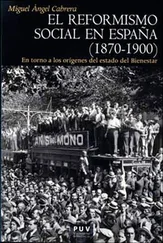1 ...8 9 10 12 13 14 ...25 As I suggested before, it is significant that this mythic use of the Mormon past belongs to the same ideal that America took as a source for its own national identity: the American West. Mormons relied on that mythology, but with a personal flair: a certain specific set of characteristics that insert their own idiosyncrasy to a narrative that encompasses a wider identity, against which they built their own. But, at the same time, Mormon experience of the American West introduces an ambiguous and paradoxical element that contributes to the opening up of a different approach to the history of the American West, one that shares with recent trends in academic research an emphasis on complexity and exploration. Throughout the history of the American West, the Mormons occupy a place that seems unbalanced and tricky. Although, due to their different (and thus dangerous) characteristics, they stood in apparent opposition to the imperialist strands that marked the pioneering of the American West, they were also involved in a process of expansion and subjugation. In short, Mormons can be perceived as a minority group within the experience of the American West. To a large extent, they match a mainstream pattern that they, on other occasions, divert from.
To write an overview of the history of The Church of Jesus Christ of Latter-day Saints is an overwhelming task that encompasses different periods that, on occasion, run parallel to the history of the United States of America. 3In fact, to encapsulate the history of the Mormon community, one needs to travel from the beginnings of the United States as a country and the key events of the pioneering days to our present time. Such a journey reaches over a vast expanse of land: from the state of New York to the deserted land around the Great Salt Lake and even further to California, and southwards down to Mexico. In the interest of clarity, I have divided Mormon history into six different periods.
Starting from the beginning, that is, from the very foundation of the Church, the first period demands an appraisal of the foundation of the Church. Joseph Smith’s first vision opens the period and it ends with Governor Bogg’s Extermination Order, which removed Mormons from Missouri (Blair 64). This period seems to establish a pattern that will be repeated in the following years.
If Mormons moved from Missouri to Illinois, then the next step should focus on Nauvoo, the first—successful but brief—attempt to build Zion. 4Nauvoo works as a symbol of Mormon enterprise and this period ends with the death of Smith which, obviously, deserves a close analysis.
The failure of this settlement launched a new period that could be symbolized by a change of focus when discerned in the main leaders of the Church. If, as I said, the Nauvoo period closes with the death of Joseph Smith, the next one opens with the emergence of Brigham Young, the main character in a very important historical period for the Mormons – referred to as the Mormon exodus—and the subsequent settling of the Salt Lake valley. The time of the exodus, as Jan Shipps affirms, contains great significance, as it led to Mormonism’s institutionalization as a Church and almost into an ethnic group in their own right: “these events took on an experiential character appropriately described as metaphorical only if metaphor is understood as something more than literary device” (Shipps 61).
This period and the following, from the pioneering days to the Mormon instauration of a community in the desert, still exercise a fundamental influence in present day Mormonism. When it comes to undertaking an analysis of Mormonism’s settling in the American West, a dual approach seems advisable. First, a period considering the first years shows how isolation was a pattern, but also how many Mormons were subjected to persistent nomadism for the benefit of a Church looking to settle in new areas. Brigham Young succeeded in promoting a sense of community during these first years. A second period within this general pioneering period follows the first one and it ends after the polygamist controversy takes place in the last years of the 19 thcentury. This period explains the dispute with the Federal government over polygamy. This was, again, a period of significant consequence for Mormon culture; a period that, in fact, draws a line that separates all of the previous periods from the future evolution of the Mormon community.
The sixth and last period sees the involvement of the Church in mainstream culture and economy. It also contains the signing of the First Manifesto, as well as the achievement of Utah statehood. The period finishes with a view to contemporary Mormonism, which consolidates its structure and status but looks for international expansion. This last period also displays the level of complexity and diversity that Mormon culture enjoys today. This recent social context will be especially helpful for understanding the subsequent analysis of contemporary Mormon literature. In what follows, I provide a lengthier approximation of each of these periods so that the events and facts in each one describe the evolution of Mormon culture and community.
Mormonism began in the east but became what it is today in the west. Joseph Smith, the son of a couple of New Englanders (Brodie 5) who, at the beginning of the 19 thcentury, moved to New York in search of a better opportunity, was concerned to find out which one of the many sects spreading in his county was the real one. The historical context in which the young Smith felt the need to ask for guidance is very significant. Isaac Bullard, Ann Lee—mother of the Shakers—, William Miller, John Humphrey Noyes, Matthias, Dylks and many other eccentric leaders were preaching in the vicinity (Brodie 15). At the turn of the century, Western New York was known for the religious revival and fervor of the many sects and cults being promoted all over the region. This situation helped the region earn the name of “burned-over district” (O’Dea 10). Smith’s own parents had many doubts about which one was the true religion. They were Calvinists, but the conditions of the New America were changing the intensity of their faith. Fawn M. Brodie states that these were days in which New England was the breeding-ground for doubts and remorse of any organized church, and this was especially true of Smith’s family (Brodie 1-15). It was within this context that Smith decided to go into the woods near his home and pray. He testified later that both God the Father and Jesus Christ appeared before him. Through this vision, Smith later confessed, he received some plates, covered in strange writing. In the following years, Smith worked on translating the writing on these plates that he claimed had a divine origin.
The Church was officially organized on April 6, 1830 in Fayette, New York. With the help of Oliver Cowdery and some other people, Joseph Smith succeeded in organizing the first gatherings and expanding new branches. After the conversion of 130 members of a Campbellite sect—the leader, Sidney Rigdon, among them (Bushman, Joseph 173)—the growth of the Church doubled. However, problems also grew, and on many occasions, Mormons were driven from their settlements. In 1831, when the first controversies began back in Western New York, Rigdon convinced Smith to move to Kirtland, Ohio. New problems, this time coming both from inside and outside the Church, forced Mormons to move again, this time to Missouri. They encountered new hostilities in Missouri. At this time, many of the controversies centered on the idea of polygamy, and this was also the emphasis of the violent events that are referred to as the first Mormon War. 5After surrendering in Far West and agreeing to leave Missouri, they crossed the Mississippi River to Illinois.
Initially, they received a friendly reception in Quincy, Illinois. They purchased land for a new gathering place close to the Mississippi River and they called it Nauvoo. The emigration program was well organized in those years and Nauvoo became the first truly successful attempt to build the kingdom of Zion on earth as it had been envisioned by Smith. The new settlement grew very rapidly, eventually forming a community of over 12,000 members (Black 93). However, in the aftermath of the prophet’s death, Nauvoo too would come to a violent end. Smith’s decision to close the Nauvoo Expositor was crucial to this event. The Nauvoo Expositor was a periodical in which two Mormon excommunicants—William Law and Robert Forster—expressed their criticism of the recent changes introduced to the Gospel during the settling of Nauvoo. Only one number of this periodical was ever published. Smith, infuriated by the initiative, forced the closing of the new journal. His closing of the printing-press caused uproar among non-Mormons, which led to him being placed in jail, where he was subsequently killed by a mob (Arrington, Church 20).
Читать дальше












